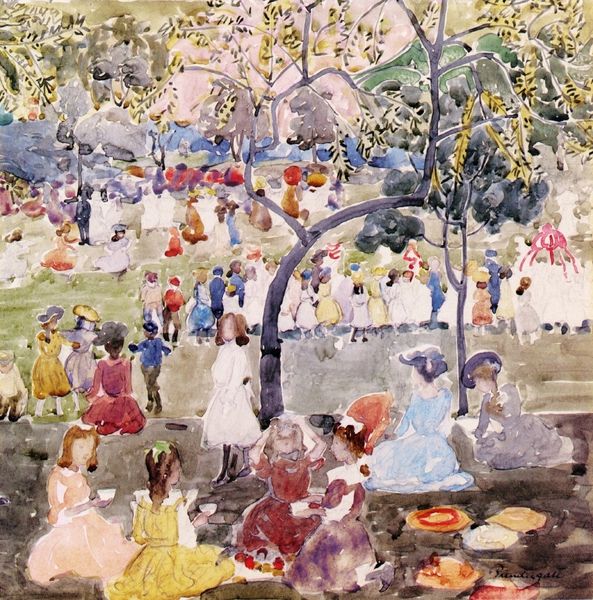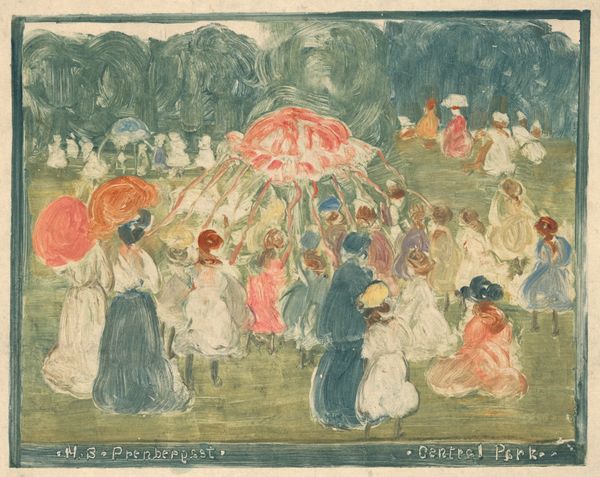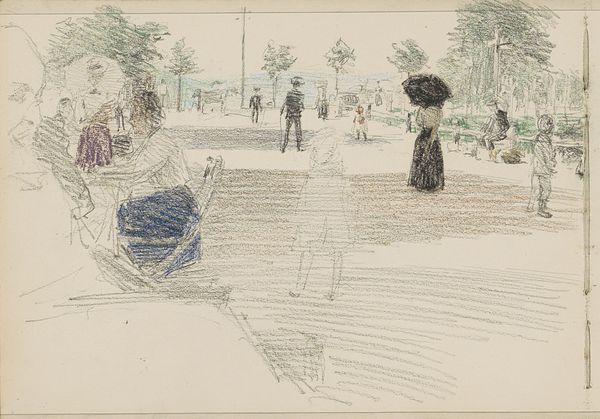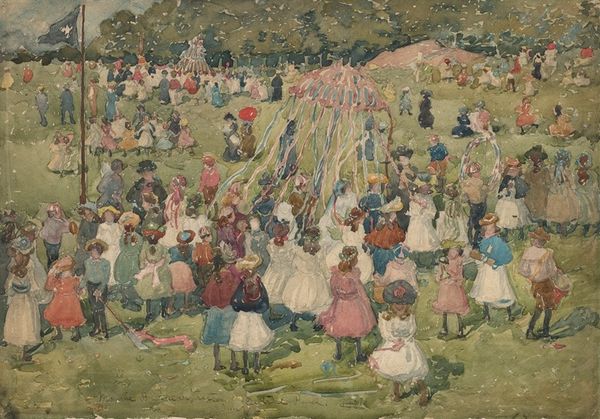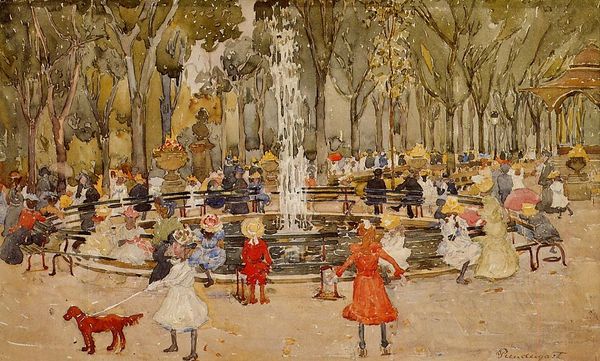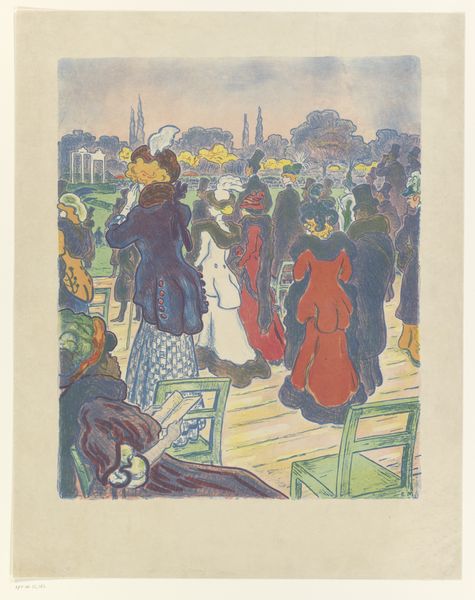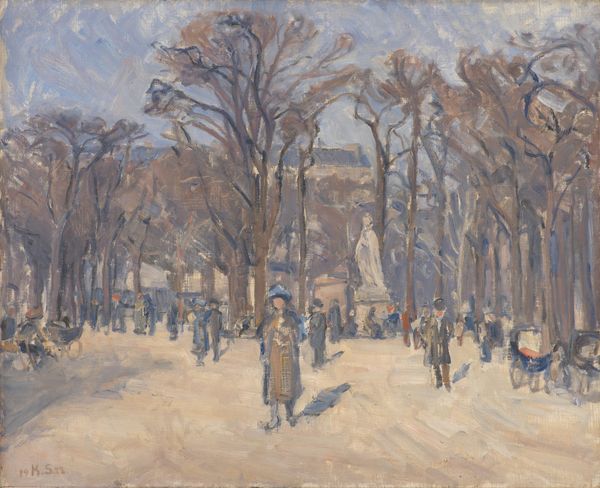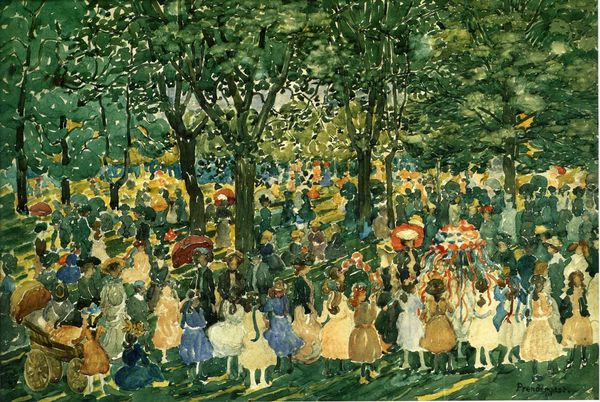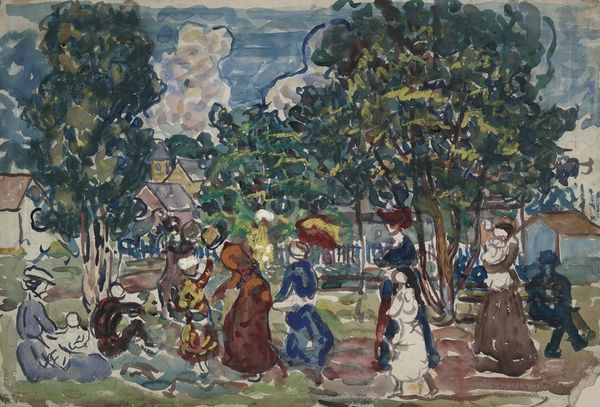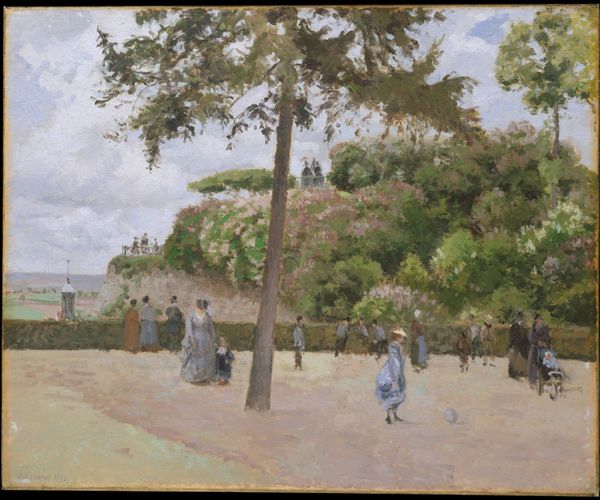
Copyright: Public Domain: Artvee
Curator: This is "The Mall, Central Park," a watercolor by Maurice Prendergast, created between 1900 and 1903. Editor: It's a lovely scene, very dreamlike. The figures are almost floating within this muted, grey-green space. A real slice of leisure, but strangely distanced. Curator: Prendergast was known for capturing everyday life, and here we see the social fabric of the time, the clothing, the leisurely activity. These people in Central Park represent the burgeoning middle class and their access to public space. Watercolors as a quick, portable medium facilitated his ability to depict these fleeting urban scenes efficiently and capture immediate moments. Editor: Note how Prendergast uses these washy layers to flatten the space, and yet there's still a distinct foreground, middle ground, and background. The repetition of vertical strokes for the trees acts as a structural element, but then those pops of color from the parasols are incredibly playful against that stark background. Curator: Absolutely, it's important to understand that even something as seemingly effortless as a watercolor involves specific choices and control. The paper itself becomes part of the piece. Consider the paper-making processes of the turn of the century and how readily available materials influenced an artist’s choices of the composition’s final look. This was a leisure time activity, the accessibility afforded informs both production and distribution. Editor: The subtle shift between these colors and muted palette really dictates a tranquil mood, despite the flurry of the social activity, it gives it a placid feeling. A nice foil for the angular architecture or the chaos we find elsewhere in an urban setting, but in Central Park, it provides calm. The brush strokes almost mimic how fleeting our memory is of time itself. Curator: Prendergast's technique, along with its subjects, speaks volumes about social norms and labor relations during the turn of the century. It’s like he’s commenting on the performative aspect of leisure in the early 20th century. Editor: So well observed with form and shape making an important conversation here; both working to pull apart then unite as an observational experience in this beautiful landscape.
Comments
No comments
Be the first to comment and join the conversation on the ultimate creative platform.
